Atlantic Monthly Contributors's Blog, page 1100
April 5, 2013
Stop Listening to Advice About When to Get Married
We're deep in the late-late stages of the aftermath of "Princeton Mom" Susan Patton's advice to Princeton undergraduate women that they should do their very best to snag a husband in college because it does not get better (or so she says). But what strikes me most about her advice is not that she had the retro-audacity to tell a bunch of college-aged women that they should focus on their Mrs. degrees above all else (hello, warmed-over Lori Gottlieb, et al.). Nor am I floored by the many, many blog posts and articles and news programs that have been spun out of her advice-giving, advice which goes against the statistical realities for college-educated women with regard to marriage (i.e., educated women who marry later tend to stay married and have happier marriages). None of what's happened with this story is surprising, really, because it happens again, and again, and again. It seems a certain group of women are always giving advice to other women about how and when to get married—in books, in movies, in magazine articles, at luncheons and brunches and dinner parties, in public and in private.
The women who choose or are forced to listen to said advice have a few options for how they might react to it. They can feel bad because they have failed to live up to said advice; they can feel outraged because they do not want to (and in fact, don't want to be told what to do, particularly not when the advice is so regressive). They can defend their own ways of life, with opinions and research. They can ignore it. They can, perhaps, feel content or self-righteous because someone has justified their way of life. This is a weird Internet knitting circle, isn't it, full of judgment and wary stares, defensiveness and jealousy, and lots and lots of sharp points, but very little happiness. Does any of this advice really change anything? Doubtful. Have women, as a general group, even asked each other for such advice? Individually, maybe, but hardly as one entity. Is there any advice, in all of human reality, that really fits one size, for all? I don't think so. And yet will busybody types keep giving you their advice, not because you asked, but because they think they know best? Always, forever, into perpetuity, until the end of time.
 That we continue to listen to and react to such advice, and even take it remotely seriously, seriously enough for me to respond in a piece like this—whether we're Princeton students or former Princeton students or married or single or men or women—might be the most shocking thing in all of this. I think—I hope—that someday we could all sit down, metaphorically if not in reality, because there is no room large enough to hold all of our opinions, and say, look: Sometimes marrying young is good. Sometimes marrying young is bad. Most of the time, we all do what we think is best for ourselves given the options we have, and marrying might or might not have to do with any of that. Whatever we do, our lives tend to move along, picking up the good and picking up the bad, as we make our ways in the world. Susan Patton's advice is probably not going to change anyone's life, except maybe her family's and her own.
That we continue to listen to and react to such advice, and even take it remotely seriously, seriously enough for me to respond in a piece like this—whether we're Princeton students or former Princeton students or married or single or men or women—might be the most shocking thing in all of this. I think—I hope—that someday we could all sit down, metaphorically if not in reality, because there is no room large enough to hold all of our opinions, and say, look: Sometimes marrying young is good. Sometimes marrying young is bad. Most of the time, we all do what we think is best for ourselves given the options we have, and marrying might or might not have to do with any of that. Whatever we do, our lives tend to move along, picking up the good and picking up the bad, as we make our ways in the world. Susan Patton's advice is probably not going to change anyone's life, except maybe her family's and her own.
So why all the Sturm und Drang about it? I spoke to NYU sociology professor Eric Klinenberg, author of Going Solo, a book about how many people today are choosing to live alone, to get his take on why advice from people like Patton always seems to rent us asunder (or just make us mad!) no matter how often we hear it, or something like it. "I always find it interesting when moralists feel compelled to give advice that runs counter to the ways we live now, and this case is especially intriguing, because the speaker is so out of touch," he said, bringing up the research realities I mention above. (We react with anger because it's not a reality for most of us, nor do we feel it should be.) "The age of first marriage is now higher than ever, particularly among people who graduate from elite schools such as Princeton," he says. "In general, that's not because highly educated women can't find qualified spouses. Most of the women she's advising here have personal and professional goals that are more easily achieved when they're on their own, able to control their own time and space. They're still developing, after all, and they may decide that they're better off experiencing the world as a single person for awhile." As single people, perhaps we are defensive of our space and time and energy; we do not want to be pushed into an institution that has historically limited those things; we certainly do not want to be scared into marriage. And if we do want to marry, chances are, it's not because it was approved by some lady in the letters-to-the-editor page of The Daily Princetonian.
It bears mentioning that the decision to marry is a very different thing for those with money and education than it is for those without. That Susan Patton was talking to educated women of means, women who can, given the luxury of their lives and educations, choose essentially whatever they want, in terms of what they hope to achieve, whether they marry or not, is important. These women are some of those who need her advice the least. That makes her comments to them particularly retroactive.
Advice in itself, though, often relies on history to determine how we should behave in the future. The problem is that marriage is changing, and, in this case, the advice is not. Stephanie Coontz, a professor and author who has written extensively about marriage and gender roles, told me that marriage has become both more optional and more individualized in the last 150 and 50 years, respectively, with more and more equality and mutuality between partners. But there is something that remains, and that's why we get the sort of advice Patton shares. "The notion hangs on that women need and want marriage more than men, and that although men initiate relationships, it is women who control the timing and emotional temperature. Hence all the advice about how to do that." There has been a change in the tenor of the advice, though: "It's interesting that the advice has shifted somewhat from how to please a man to how to ensure that you are happy in the relationship, but the old theme of 'do this or you might miss out' is still there." This is a kind of progress in the marital-advice cycle, if not enough. "It used to be do this now or you will never marry," says Coontz, "but she added the new twist of 'do this or you will never marry a man as smart as you.' Which is 1) wrong, and 2) extremely elitist in its assumption that Prnceton grads are so much smarter than the other college grads that these women will meet after graduating and entering the workforce."
There is a kernel of truth, though, and maybe that's what gets us going, too. "Once you no longer meet your mate in high school or in college, with the rising age of marriage, it does become harder to find a readily visible pool of potential dates or mates. So there is some legitimate anxiety," says Coontz. But before you spin out about that, know this: "College-educated women do manage—they are more likely now to marry than any other group of women, even though they marry later. And they are less likely to divorce when they do marry, so they must be doing something right."
As someone who's written frequently on the subject of marriage, I certainly don't think it's wrong to keep talking about the way we do these things today. I think it's a key part of determining who we are, and who we want to be. At the same time, the way we feel about these life milestones has changed immensely and continues to shift. We're all trying to keep pace with these changes and figure out how to do things best for ourselves, but we only have the past to go on; the future remains uncharted. And perhaps that's why Patton's advice gets us, too. Still, focusing on old-world outrage-worthy mantras like hers seems to divert our time and energy from the greater discussion that might involve the bigger, better, and more important questions. Like, not "at what age should a woman marry?" but maybe, "What is love and what should a successful relationship be in this day and age?" Not "If I choose not to marry or have children am I ruining society?" but instead, "How do we make ourselves, and, if we decide to pair up, our partners, happy in the lives we're living, and in the futures we hope to have?" If we could take the fear out of it, it would be a better discussion.
Will the marital-advice cycle ever end?, I asked Coontz. Probably not entirely. "I do think that it's human nature to want to give advice," she said, adding that she considers it a benign activity in origin "sort of like sharing food in band level societies" though it "can easily slide into excessive pushing." The advice could get better, though. "What would be good is if the advice could actually be based on accurate research instead of recycled anxieties and stereotypes, offered to men as well as women, and presented in humility, recognizing that not everyone shares the advice-givers' needs, tastes, and preoccupations!" she said.
That would be nice, indeed, as would the acknowledgement that a lot of things just have to be figured out for every individual, him or herself, or together, if it's a question of that. And for those of us working on figuring things out, here is my advice, which you can take or leave: Don't worry about what some Princeton Mom, or anyone else, has to say. You have to do you, in marriage, as in life.









Judge Opens Up Morning-After Pill Access for All Teenage Girls
Consider this a win for women's health advocates: U.S. District Judge Edward Korman has ruled that the U.S. government must make the "morning-after" pill available over the counter and available to all ages. Responding to suit brought to the Brooklyn court by reproductive rights groups, "which had sought to remove age and other restrictions on emergency contraception," Reuters reports, the judge struck down a law Friday morning requiring girls 16 and under to obtain a prescription before obtaining the pill. Korman's decision "counteracts an unprecedented move by the Obama administration's Health and Human Services secretary who in 2011 overruled a recommendation by the Food and Drug Administration to make the pill available for all ages without a prescription," reports The New York Times's Pam Belluck.
"Women all over the country will no longer face arbitrary delays and barriers just to get emergency contraception," Nancy Northup, president of the Center for Reproductive Rights, is quoted as saying the Reuters report.
U.S. Health and Human Services Secretary Kathleen Sebelius was a major — and majorly controversial — part of that overruling in December of 2011, upsetting women's heath advocates who had argued that the Obama administration was acting politically, moving on ideology rather than science. "The Plan B decision was a missed opportunity for Obama to strengthen his record on women's reproductive issues," Nancy Keenan, president of NARAL Pro-Choice America told told the Huffington Post's Laura Bassett at the time.
Previously, girls under the age of 17 would have had to get a prescription before obtaining emergency contraception medication. And since the pill, according to Plannet Parenthood, needs to be taken within five days of intercourse, the time frame presented a problem for girls 16 and under who might not be able to get a prescription — for whatever reason — in time for contraception to work properly. The FDA has not commented on the case, and has said it's an ongoing legal matter.









Jon Stewart Finally Calls Out the New Absurdity of CNN
On The Daily Show last night, Jon Stewart went after Jeff Zucker's newfangled approach at CNN, taking aim at hologram goats, vegetarians who eat bacon, and horrifying murder recreations. Stewart screamed in horror after showing the network's segment on how the Jodi Arias murder happened. "This is the middle of the day," Stewart said. "That piece could have been seen by any child—traveling through an airport."
The Daily Show with Jon Stewart
Get More: Daily Show Full Episodes,Indecision Political Humor,The Daily Show on Facebook









The Economy Added a Shockingly Low 88,000 Jobs Last Month
The unemployment rate dropped from 7.7 to 7.6 percent in March, according to data released this morning by the Bureau of Labor Statistics — but that was the good news. The economy only added 88,000 jobs.
This was substantially lower than expectations, as noted by economist Justin Wolfers.
A reminder on consensus forecasts: Payrolls 192k; private 210k. Unemployment at 7.7%; earnings 0.2%.
— Justin Wolfers (@justinwolfers) April 5, 2013
Numbers for February and January were revised up 32,000 jobs and 29,000 respectively, yielding a total change of 61,000 jobs.
The unemployment rate dropped 0.1 percent, although that differed among various demographic groups.
The sector of the economy that saw the biggest change was professional services for the second month in a row.
One particularly interesting data point is the labor force participation rate, basically the percentage of the working-age population who are working or looking for work. As Reuters' Cate Long notes, it's at its lowest point in 30 years.
This is key stat... not unemployment rate ---> "@kelly_evans: US labor force participation hits a new 34-year low (63.3%).
— Cate Long (@cate_long) April 5, 2013
The average workweek increased 0.1 hour to 34.6 hours. Average hourly earnings increased one cents to $23.83, having increased 42 cents over the year.









The Avian Flu Containment Is Reaching 'Contagion' Levels of Precaution
Six people are dead from the H7N9 strain of avian flu. The number of infected has grown to to 14. A new scare just hit Hong Kong. The United States has begun early research for a vaccine. And now China has slaughtered 20,000 chickens, ducks, geese, and pigeons — and shut down its live poultry markets — to try and cut off the health risk at the source. So: Is it time to panic yet?
Well, not exactly.
We're not doctors, obviously, but the people at the World Health Organization said on Friday that they still haven't found proof of "sustained human-to-human transmission" of H979, reports Reuters. That's the key difference between this latest scare going from a relatively isolated virus incident into full-fledged Contagion panic. In Hollywood terms, we're about at the stage where the pig has left the farm but not yet arrived at the table with Gwyneth Paltrow. And while H979 isn't thought to be quite horror-movie bad, we might be at the point where Kate Winslet is about to get called in: The Centers for Disease Control in Atlanta is already working to develop a vaccine, CNN reports, although U.S. and Chinese scientists still haven't exactly accounted for how humans developed the virus.
In order to stem the tide, China has culled tens of thousands of birds along with a poultry-market shutdown. And while 20,000 animals might seem a lot of stock, well, Mexico had bird flu fears of their own last year and killed 8 million chickens in August as a precaution. So, that's another good takeaway — provided you are not a duck, goose, or chicken hanging out in Shanghai.
Feel better? Whew.
While the first human-to-human transmission contact still hasn't been determined, there is the frightening reality that, in less than a week, 14 people have been identified as infected with the virus — and now six of them have died. All of the infected were found "in the coastal area of eastern China. Authorities there began reporting the first cases on Sunday. Four of the deaths happened in Shanghai, the two others in Zhejiang," reports CNN, and according to the South China Morning Post, a 7-year-old in Hong Kong showed signs of the H729 strain and has been put in an isolation ward. (She was visiting the Shanghai region, too.)
"It is really a severe illness but cases are being well handled and put into intensive care units. There doesn't seem to be any indication of infections in hospital so far," WHO spokesman Gregory Hartl told reporters in Geneva on Friday. He added: "Remember even that if they are infected, you still need to try to find out if they contracted the virus from one another, or from a common environmental source."









April 4, 2013
With Apologies to North Korea, Bomb Shelter Sales Are Not Rising in the U.S.
Despite the threats of a nuclear-armed dictator, it doesn't appear that America is ready for a new Cold War. At least, not if bomb shelter sales are any indicator.
The question was prompted by a weird story in U.S. News and World Report. Titled "Americans Reconsider Bomb Shelters Following North Korean Threats," the article then proceeds to never mention bomb shelters, instead interviewing a South Korean professor who says, in essence, that there's nothing to worry about. We decided to see if there was any reason for such a headline.
It seems obvious that areas that might be more likely to be struck by a North Korean missile would be more likely to invest in a bomb shelter. So the first question to answer: How far can a North Korean missile reach?
The answer, it seems, is "not to America." As Max Fisher writes at the Washington Post, North Korea has a variety of missiles. Many are untested. One, the KN-08, could reach 6,000 miles, enough to hit California — if it worked and if the North Koreans actually have it and if it were accurate. But it's the only one that would reach, so we'll go with it.
Next, we looked for a bomb shelter sales establishment in that range. And we found American Safe Room, in Oakland, Oregon. According to DistanceFromTo.com, Oakland is 5,300 miles from Pyongyang. That's in range.

Map via DistanceFromTo.com.
(Would Oakland ever be attacked? Maybe if North Korea confused it for Oakland, California. Or maybe if North Korea was aiming for Portland and missed. Just go with it.)
We called American Safe Room and spoke with Brian Duvaul, the company's sales manager. The first question gave us all the answer we needed. "We have yet to see any bump" in sales, he told The Atlantic Wire. Not that people aren't paying attention to what's happening in the world. "We had a pretty good bump after the Japanese nuclear incident," he said, running out of stock in a day-and-a-half. But not this time. So why not now? Well, he responded, "I don't know they have the delivery means."
American Safe Room doesn't only sell to Oregon, either — they sell shelter components across the country. (The assembly manual is free.) If Duvaul isn't seeing an increase, there's probably no increase.

Since we had him on the phone, we asked Duvaul just how much good a shelter would actually do. Their shelters aren't rated for certain kiloton blasts at certain distances, but he did offer one assessment. "If you had a blast in your face," he told the Wire, "you'd probably at least be blind and have a concussion. It would probably kill some people." But be warned: their air filters are only good for one event. So "if you have an event you have to change the filter." If you've been blinded, find a helper.
Duvaul didn't suggest how long one would have to stay in the shelter, but this 1960s-era video suggests that it could be as long as two weeks. If you lived through the explosion. Bring books.
And now you have your answer: According to one salesperson, there is no boom in bomb shelter sales. Yes, it's anecdotal evidence, but it's one more data point than U.S. News offered.









The Spring 2013 Book Preview
As we ping-pong temperature-wise on the East Coast between winter and spring, spring books are arriving and paying little attention to the weather. Here, with the help of some book-loving friends and authors, we round up a few that we're most eager to dive into in the coming days and weeks, when, we hope, the sun finally brings some flowers (and in May, Dan Brown's Inferno, if that's your thing).
THE MOST-RECOMMENDEDS
 Gulp, by Mary Roach. (W. W. Norton, April 1). WORD Brooklyn's Jenn Northington says the bookstore staff is raving about this latest entry from the author of Stiff, a "veteran writer who's just gotten better and better with each book." This time, the very funny Roach takes on the alimentary canal, or, what happens during food's journey through your body.
Gulp, by Mary Roach. (W. W. Norton, April 1). WORD Brooklyn's Jenn Northington says the bookstore staff is raving about this latest entry from the author of Stiff, a "veteran writer who's just gotten better and better with each book." This time, the very funny Roach takes on the alimentary canal, or, what happens during food's journey through your body.
Life After Life, by Kate Atkinson. (Reagan Arthur Books, April 2). The newest from the prolific, popular, and highly intelligent Atkinson—who this time tells the story of a main character who has infinite lives—is 544 pages, perfect for really sinking your teeth into.
All That Is, by James Salter. (Knopf, April 2). The brilliant Salter, now approaching 90, weaves the life story of Phillip Bowman beginning at the end of World War II. The Middlesteins' author Jami Attenberg calls it "amazing, the story of a life, and everything that one man has learned, from a master."
 The Interestings, by Meg Wolitzer. (Riverhead, April 9). This may be the title of the season I've heard most shouted from the literary mountaintops. Attenberg says it's "epic, funny, charming, deeply felt. A true accomplishment." Northington reports the bookstore staff is abuzz about it as well. And Emma Straub, author of Laura Lamont's Life in Pictures, says, "I loved loved loved it."
The Interestings, by Meg Wolitzer. (Riverhead, April 9). This may be the title of the season I've heard most shouted from the literary mountaintops. Attenberg says it's "epic, funny, charming, deeply felt. A true accomplishment." Northington reports the bookstore staff is abuzz about it as well. And Emma Straub, author of Laura Lamont's Life in Pictures, says, "I loved loved loved it."
THEY'RE FUNNY BECAUSE THEY'RE TRUE
STFU, PARENTS: The Jaw-Dropping, Self-Indulgent, and Occasionally Rage-Inducing World of Parent Overshare, by Blair Koenig. (Perigee Trade; April 2). Your print guide to the world of annoying parenting from the author of the blog that must not be named by The New York Times.
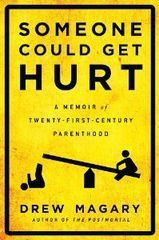 Everything Is Perfect When You're a Liar, by Kelly Oxford. (It Books, April 2). Blogger/memoirist Kelly Oxford has quite a lot of Twitter followers, and quite a few of them have been freaking out about her new book, which, as is happens, Lena Dunham pronounced funny, too. She had me with her chapter called "Tweezers."
Everything Is Perfect When You're a Liar, by Kelly Oxford. (It Books, April 2). Blogger/memoirist Kelly Oxford has quite a lot of Twitter followers, and quite a few of them have been freaking out about her new book, which, as is happens, Lena Dunham pronounced funny, too. She had me with her chapter called "Tweezers."
I Can Barely Take Care of Myself, by Jen Kirkman. (Simon & Schuster, April 16.) Comedian Kirkman has written a book with the subtitle "Tales from a Happy Life Without Kids." Consider her the relatable counter to Magary, below, and Koenig, above.
Someone Could Get Hurt, by Drew Magary. (Gotham, May 16). I laughed and cried—really, I did, often simultaneously—while reading Margary's memoir about fatherhood in these modern times.
FLIGHTS OF WORD-NERD FANCY
The Story of English in 100 Words, by David Crystal. (Picador, April 2). I'm dying to get my hands on this reprint, initially published by St. Martins in 2012, now available from Picador as a trade paperback. Crystal "draws on one hundred words that best illustrate the huge variety of sources, influences and events that have helped to shape our vernacular since the word roe was written down on the bone ankle of a roe deer in the fifth century."
LITERARY LOVELIES
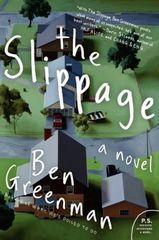 The Flamethrowers, by Rachel Kushner. (Scribner, April 2). Kushner on the SoHo art scene and Italy's radical '70s! "Because it's New York in the 1970s, art world, like my favorite time, ever, in recent American history," says Practical Classics author Kevin Smokler.
The Flamethrowers, by Rachel Kushner. (Scribner, April 2). Kushner on the SoHo art scene and Italy's radical '70s! "Because it's New York in the 1970s, art world, like my favorite time, ever, in recent American history," says Practical Classics author Kevin Smokler.
Woke Up Lonely, by Fiona Maazel. (Graywolf, April 2). This farcical, hilarious take on modern life is one on the must-read list of Vol. 1 Brooklyn's Tobias Carroll, and it's on mine, too.
The Fever Tree, by Jennifer McVeigh. (Amy Einhorn, April 4). This sweeping novel takes place in 1880s South Africa and has been compared to Gone With the Wind.
The Slippage, by Ben Greenman. (Harper Perennial, April 23). The New Yorker’s very funny Ben Greenman, author of Superbad, deals with the serious subject of marriage—as the author told me, it's "a domestic book about things that people of a certain age face." But of course, it's funny, too, with plenty of mordant wit.
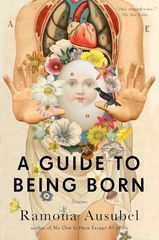
A Guide to Being Born, by Ramona Ausubel. (Riverhead. May 2). This may be the most beautiful cover of the season, designed by Alex Merto. Also beautiful is what's inside: a story collection charting "the cycle of transformation from love to conception to gestation to birth."
Love Among the Particles, by Norman Lock. (Bellevue, May 7). Lock's upcoming collection "is, to my mind anyway, dreamlike, Borges-infused stuff," says Carroll. Bookslut calls Lock "Our finest modern fabulist.”
The Other Typist, by Suzanne Rindell. (Amy Einhorn, May 7). Rindell's debut tells the story of police precinct stenographer Rose Baker who finds herself accused of murder in the world of 1920s New York City. Totally addictive.
CAPTIVATING NONFICTION
Letters to a Young Scientist, by Edward O. Wilson. (Liveright, April 15). Of this book by the Pulitzer-prize-winning evolutionary biologist, Smokler says, "Can't say I love his views on genetics. But I love animals and the man talks about the science of animals better than anybody."
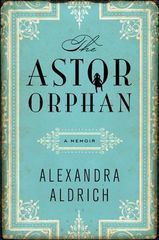 The Astor Orphan: A Memoir, by Alexandra Aldrich. (Ecco, April 16). If you loved Grey Gardens ... Alexandra Aldrich, a descendent of John Jacob Astor, writes of her fascinating life and eccentric family—and "her escape from the clan"—in this debut.
The Astor Orphan: A Memoir, by Alexandra Aldrich. (Ecco, April 16). If you loved Grey Gardens ... Alexandra Aldrich, a descendent of John Jacob Astor, writes of her fascinating life and eccentric family—and "her escape from the clan"—in this debut.
In the City of Bikes, by Pete Jordan. (Harper Perennial, April 16). In his memoir about loving bikes and living in Amsterdam, Jordan, the author of Dishwasher, also manages to deliver a substantive chronicle of cycling throughout Dutch history.
Cooked, by Michael Pollan. (Penguin Press, April 23). An examination of cooking—micro and macro—from one of our most fascinating foodists.
YOUR SUBWAY READS (i.e., ESSAYS)
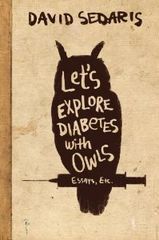 Let's Explore Diabetes With Owls, by David Sedaris. (Little, Brown; April 23). A new David Sedaris book. That is all.
Let's Explore Diabetes With Owls, by David Sedaris. (Little, Brown; April 23). A new David Sedaris book. That is all.
Farther Away, by Jonathan Franzen. (Farrar, Straus and Giroux, April 24). This essay collection is a compilation of Franzen's shorter writing from the past five years, and include Franzen's reflections following the suicide of his friend, David Foster Wallace. Obviously, a must-read for Franzen-ophiles.
Forty-one False Starts: Essays on Artists and Writers, by Janet Malcolm. (Farrar, Straus and Giroux, May 7). Smokler recommends this one, saying, "Did I mention that I have an essay thing? I also read Malcolm's biography of Sylvia Plath in grad school. Changed my life." Also life-changing: The Journalist and the Murderer. This compendium of several decades of her essays about, yes, artists and writers, will not disappoint, I suspect.
The list, of course, goes on, but this should take you into May, when we'll be back with summer reads for your beach-perusing pleasure.









Roger Ebert, the Heart and Soul of the Movies, Has Died
The Chicago Sun-Times is reporting that its longtime film critic Roger Ebert, whose long battle with cancer couldn't take him away from the words he loved so much, has passed away at the age of 70. Here's the first word from The Sun-Times:
It is with a heavy heart we report that legendary film critic Roger Ebert (@ebertchicago) has passed away
— Suntimes (@Suntimes) April 4, 2013
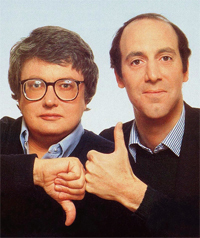 Ebert, an Illinois native known for his neverending enthusiasm for the movies as a fan first, quickly rose to prominence as a critic at the Sun-Times at the age of 24. His syndicated show with his friend, the late Gene Siskel, brought movie criticism inside American homes like never before, with thumbs. But Ebert was a film lover first, a personality by default, and a writer always. In 2002, he was diagnosed with thyroid cancer but continued to work, and when surgery in 2006 led to a reconfiguration of his facial structure and a loss of the ability to speak, he worked even harder. Esquire's Chris Jones chronicled Ebert's embrace of a popular Twitter account and his Sun-Times blog, "Roger Ebert's Journal," to write voraciously — reviews, social commentary, and a kind of personal social-media diary of his life with cancer.
Ebert, an Illinois native known for his neverending enthusiasm for the movies as a fan first, quickly rose to prominence as a critic at the Sun-Times at the age of 24. His syndicated show with his friend, the late Gene Siskel, brought movie criticism inside American homes like never before, with thumbs. But Ebert was a film lover first, a personality by default, and a writer always. In 2002, he was diagnosed with thyroid cancer but continued to work, and when surgery in 2006 led to a reconfiguration of his facial structure and a loss of the ability to speak, he worked even harder. Esquire's Chris Jones chronicled Ebert's embrace of a popular Twitter account and his Sun-Times blog, "Roger Ebert's Journal," to write voraciously — reviews, social commentary, and a kind of personal social-media diary of his life with cancer.

(Photo by Ethan Hill/Esquire)
Just Tuesday, Ebert had announced in a blog post that he was receiving another round of treatment for cancer, insisting he had to "slow down" his output but hoping to relaunch his site and continue to write reviews for the Sun-Times on a regular basis. Indeed, as the illness set in throughout 2012, the already voluminous Ebert wrote the most reviews he had ever written in a single year: 306. He loyally entered The New Yorker's caption contest every week, and dutifully met his deadline on reviews through last week.
Ebert is survived by his wife, Chaz.
Here is Ebert's TED talk, "Remaking My Voice," from 2011:
That same year, 60 Minutes examined Ebert's voice and his battle with cancer:
We'll be collecting some of his more classic reviews, along with more of the best writing by and about Ebert, to honor his legacy below:
Ebert on Ebert
"I was perfectly content before I was born, and I think of death as the same state ... I am grateful for the gifts of intelligence, love, wonder and laughter. You can't say it wasn't interesting." (The AP quotes an Ebert passage from 2010)
"I go into the movie, I watch it, and I ask myself what happened to me." —Life Itself (memoir, 2011)
"The food and drink I can do without easily. The jokes, gossip, laughs, arguments and memories I miss. I ran in crowds where anyone was likely to start reciting poetry on a moment's notice. Me too. But not me anymore. So yes, it's sad. Maybe that’s why writing has become so important to me." —Life Itself
Ebert on the Movies
"No good movie is too long and no bad movie is short enough."
"I am, beneath everything else, a fan. I was fixed in this mode as a young boy and am awed by people who take the risks of performance." (via The Hollywood Reporter)
On Battlefield Earth (Chicago Sun-Times):
Battlefield Earth is like taking a bus trip with someone who has needed a bath for a long time. It's not merely bad; it's unpleasant in a hostile way.
On the 1998 remake of Godzilla:
"Going to see Godzilla at the Palais of the Cannes Film Festival is like attending a satanic ritual in St. Peter's Basilica."
The Obituaries
"Roger Ebert loved movies. Except for those he hated." —The Chicago Sun-Times
"[I]n his words and in his life he displayed the soul of a poet whose passions and interests extended far beyond the darkened theaters where he spent so much of his professional life."—The Chicago Tribune
"It would not be a stretch to say that Mr. Ebert was the best-known film reviewer of his generation, and one of the most trusted." —The New York Times
"[Ebert's] gladiatorial 'thumbs up, thumbs down' assessments turned film reviewing into a television sport and whose passion for independent film helped introduce a new generation of filmmakers to moviegoers..." —Los Angeles Times
Chicago on Ebert
twitpic.com/cgzdu9 Truly one of Chicago's Very Own. RIP, Mr. Ebert.
— WGNTV (@WGNTV) April 4, 2013
Others on Ebert
"Michelle and I are saddened to hear about the passing of Roger Ebert. For a generation of Americans — and especially Chicagoans — Roger was the movies. When he didn't like a film, he was honest; when he did, he was effusive — capturing the unique power of the movies to take us somewhere magical. Even amidst his own battles with cancer, Roger was as productive as he was resilient — continuing to share his passion and perspective with the world. The movies won't be the same without Roger, and our thoughts and prayers are with Chaz and the rest of the Ebert family." —President Obama, Thursday
"But now everything he says must be written, either first on his laptop and funneled through speakers or, as he usually prefers, on some kind of paper. His new life is lived through Times New Roman and chicken scratch. So many words, so much writing—it’s like a kind of explosion is taking place on the second floor of his brownstone." —Chris Jones, Esquire, 2010
"Ebert's writing is gentle, calm and infectious. He trusts his readers not to be morons. He writes for who he imagines to be the ideal reader, which is actually the reader we all wish ourselves to be. Those who thought of him as the fat man with the thumb always missed the point. He became who he was because of his work. He did it the right way." —Will Leitch, Deadspin, 2010
Ebert on Gene Siskel (Chicago Sun-Times):
I don't want to rehearse the old stories about how we had a love/hate relationship, and how we dealt with television, and how we were both so scared the first time we went on Johnny Carson that, backstage, we couldn't think of the name of a single movie, although that story is absolutely true. Those stories have been told. I want to write about our friendship.
Ebert on Others
On Lee Marvin: "Through the door you could hear the waves hitting the beach, crush, crush, and at this moment, while Marvin pretended to sleep, the morning resolved itself as a melancholy foggy Saturday." —Esquire, 1970
On Vincent Gallo: "I will one day be thin, but Vincent Gallo will always be the director of The Brown Bunny."
On Sarah Palin: "How many Presidents have needed a teleprompter less than Obama? How many ex-governors have needed one more than Palin?"









Senator Inhofe and an NFL Receiver Are Stooping to Kim Jong-un's Threat Level
Let no one ever intimate that we Americans can't be as flippant about threats to bomb things as Kim Jong-un. As North Korea ratchets its rhetoric to a 732 (on a 2,500-point scale), Senator Jim Inhofe and the Buffalo Bills' Stevie Johnson got in on the act, too.
Speaking to NewsMax (of course), Inhofe, the senior senator from Oklahoma, presented his case.
The guy that runs that show up there [Ed. Note: that would be Kim Jong-Un] is just as bad as his daddy was. He's not reliable in terms of what he might do and what he might say. … I think he's deranged.
Fair critique. Who would just willy-nilly threaten to bomb another country? Clear sign of derangement. Inhofe continued.
I think we should prepared to do [a pre-emptive strike] right now. We do have … capability out there right now with the F-22s and the battleships. And I think something of a preemptive strike, something like that, would get their attention.
Yes, it probably would. Whether or not Inhofe was standing in front of a large map covered with lines pointing at North Korea is unknown.
Meanwhile, Stevie Johnson of the Buffalo Bills offered a more sober take.
War is nothing to be played with. I apologize North Korea........but if y'all do bomb 1st... Bomb Foxboro, Mass. Sincerely,#BillsMafia
— STVN (@StevieJohnson13) April 3, 2013
Foxboro, Massachusetts, is the capital city of another disturbing empire: the New England Patriots. Johnson perhaps hates the Patriots because the Pats have won 63 of the 104 times the two teams have played.
Johnson sort of apologized later.
i know some of yall took it too serious.. but i have Much Respect for The Pats along with Every other NFL Team. Gonna to be a Great #NFL2013
— STVN (@StevieJohnson13) April 4, 2013
It's not a great plan anyway. Very few of the Patriots actually live in Foxboro. But at least Johnson was only suggesting that about 17,000 people be killed. Pyongyang has 147 times as many people.
Speaking of talking about bombing things, CNN busted out its holograms to imagine what a war in the Koreas might look like. (It has previously used the technology for other important issues, like Will.I.Am and goats.) If you don't want to watch the video, it mostly involves arrows pointing from North to South. But, you know, in 3D.
Results of the Rationality Olympics are in: Johnson and CNN tie for silver, Inhofe takes home the bronze. There was no first-place winner.









Terror Group Recruits From Pakistan's 'Best and Brightest'
Imagine a terrorist group that recruits tens of thousands of young men from the same neighborhoods and social networks as the Pakistani military. A group whose well-educated recruits defy the idea that poverty and ignorance breed extremism. A group whose fighters include relatives of a politician, a senior Army officer and a director of Pakistan's Atomic Energy Commission.
That is the disconcerting reality of Lashkar-e-Taiba, one of the world's most dangerous militant organizations, according to a study released today by the Combating Terrorism Center at the U.S. Military Academy in West Point, N.Y. The report helps explain why Pakistan has resisted international pressure to crack down on Lashkar after it killed 166 people in Mumbai — six U.S. citizens included — and came close to sparking conflict between nuclear-armed Pakistan and India.
The findings, which draw on 917 biographies of Lashkar fighters killed in combat, illuminate "Lashkar's integration into Pakistani society, how embedded they are," said co-author Don Rassler, the director of a research program at the center that studies primary source materials. "They have become an institution."
The three-day slaughter in 2008 drew global attention because it targeted Westerners as well as Indians and implicated Pakistan's spy agency. The Inter-Services Intelligence Directorate (ISI) continues to protect the masterminds, according to Western and Indian counterterror officials. U.S. prosecutors indicted an ISI major in the deaths of the Americans: He allegedly provided funds, training and direction and served as the handler of David Coleman Headley, an U.S. reconnaissance operative now serving 35 years in a federal prison.
The 56-page West Point report is titled "The Fighters of Lashkar-e-Taiba: Recruitment, Training, Deployment and Death." Though it refrains from policy suggestions, there are implications for U.S. counterterror strategy. Lashkar's popularity and clout defy conventional approaches to fighting extremism, said co-author Christine Fair, a Pakistan expert at Georgetown University.
"When you have an organization that enjoys such a degree of open support, there are no options for U.S. policy other than counterintelligence, law enforcement and counter-terrorism targeting," Fair said in an interview.
Lashkar was founded in 1989 by Hafiz Saeed, its spiritual chief today, and other ideologues. The ISI deployed Lashkar as a proxy force against India, especially in the disputed Kashmir region. Although banned by Pakistan in 2002, the group still functions unmolested, the ISI provides funds, military training and arms, and ISI officers serve as handlers for Lashkar chiefs, according to Western and Indian investigations. The U.S. officially declared Laskhar a terror group in 2001.
The West Point researchers said they used "massive amounts of material that the group produces about itself" to analyze the trajectories of Lashkar fighters who were killed between 1989 and 2008. The researchers translated from Urdu the 917 biographies that appeared in four extremist publications, including one written by mothers of fallen militants.
Recruits often become holy warriors with the help of their families, which admire Lashkar's military exploits in India and Afghanistan and its nationalism and social service activities at home, the study says. Unlike other terrorist groups, Lashkar does not attack the Pakistani state.
The group's vast training camps have churned out fighters at an alarming rate. The study gives an estimate of between 100,000 and 300,000 total trainees. By comparison, a U.S. counterterror official told ProPublica he has seen figures as high as 200,000, though he put the number in the tens of thousands.
Most recruits examined in the study joined at about age 17 and died at about 21, generally in India or Afghanistan. Their backgrounds contradict "a lingering belief in the policy community that Islamist terrorists are the product of low or no education or are produced in Pakistan's madrassas," the report says.
"These are some of Pakistan's best and brightest and they are not being used in the labor market, they are being deployed in the militant market," Fair said. "It's a myth that poverty and madrasas create terrorism, and that we can buy our way out of it with U.S. aid."
Lashkar's publications downplay its longtime links to the security forces, the authors said. But connections emerge nonetheless. Lashkar recruits aggressively in the districts of the Punjab region that produce the bulk of Pakistan's officer corps — "a dynamic that raises a number of questions about potentially overlapping social networks between the army and (Lashkar)," the report says.
"It looks like based on what we have as if there's a considerable degree of overlap," Fair said. "The military and Lashkar are competing for guys with the same skill set."
At least 18 fallen fighters had immediate family members who served in Pakistan's armed forces. Although most recruits were working or lower middle-class, some "had connections to elite Pakistani institutions and Pakistani religious leaders and politicians." The study cites Abdul Qasim Muhammad Asghar, son of the president of the Pakistan Muslim Leagueʹs labor wing in Islamabad and Rawalpindi.
Another case stands out: a fighter known by the nom de guerre of Abdul Razzaq Abu Abdullah. His 2003 obituary by his mother describes his maternal uncle as "a director of Pakistan's Atomic Energy Commission."
Abdul, one of four brothers from the town of Chak Deenpur Sharif in Punjab province, showed interest in holy war as a teenager. His uncle tried to discourage him and found him a post in the military, the biography states. But the young man finally joined Lashkar and died in combat in Indian Kashmir at age 20, the report says.
The authors did not substantiate the account or identify the Pakistani official at the atomic energy commission. But the allusion evokes persistent fears that Pakistan's nuclear arsenal is vulnerable to Islamic terrorists. Pakistani nuclear officials have had contacts with al Qaida in the past.
The CIA has had particular concerns about Lashkar in this regard, according to veteran counterterror officer Charles Faddis. Between 2006 and his retirement in 2008, Faddis led a CIA unit dedicated to preventing terrorists from acquiring weapons of mass destruction. Lashkar's influence with the Pakistani security establishment and its reach into the Pakistani diaspora were worrisome, Faddis said.
"They were the kind of group that concerned us," Faddis said. "They operated in Pakistan with a lot more ease than al Qaida. They had the ability to make connections with military officers, well-educated people abroad, scientists. The Pakistani government was extremely reluctant to confront them.
"All of this added up to a bad situation," he said.
Lashkar's impunity is reflected in the continued defiance and power of Saeed, the spiritual chief. Although India charged him for Mumbai and the State Department offered a $10 million reward for his arrest, Pakistani authorities have done nothing except to provide him police security, U.S. and Indian officials say.
Saeed denies involvement in Lashkar's military wing, a claim disputed by the study. In a "surprising number" of cases, Rassler said, trainees who were deployed on combat operations went to Saeed to seek his personal approval.
"In their own publications, they are saying he plays an operational role," Rassler said.
Lashkar has not carried out a major attack since Mumbai, devoting more energy instead to political activism. But the group continues to engage in terrorist activity outside Pakistan and has cranked up its anti-American rhetoric, Fair said.
Lashkar is among the militant groups that use the tribal areas of Pakistan as a base for attacks on U.S. troops in neighboring Afghanistan, according to U.S. counterterror officials. Nonetheless, Fair said U.S. forces have not targeted Lashkar fighters in Pakistan with missile strikes out of concern that this would anger Pakistan, whose help is needed in Afghanistan. Instead, there are discussions of taking more aggressive action against Lashkar in other countries.
"We are essentially being held hostage by the war in Afghanistan," she said.









Atlantic Monthly Contributors's Blog
- Atlantic Monthly Contributors's profile
- 1 follower



